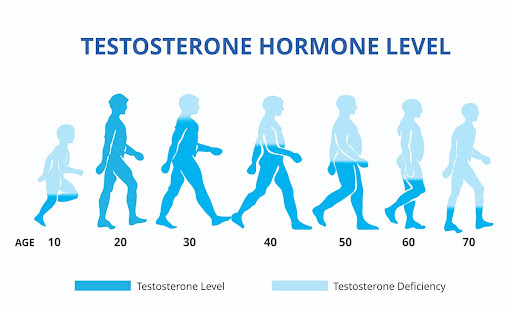Low-T is a common condition we see and treat at KCUC Urology and Oncology. So what exactly is it? What are the signs to look for? How do you know if you have it? What are the treatment options? We’ll answer these questions here.
What Is Low-T?
Testosterone is the male sex hormone that is made in the testicles. Testosterone hormone levels are important to normal male sexual development and functions. Testosterone Deficiency Syndrome (TD) or Low Testosterone (Low-T) is a condition wherein the body does not have enough testosterone. The word syndrome sounds ominous, but it is simply a group of symptoms that, when they occur together, suggest a disease or health condition.
What Are The Causes of Testosterone Deficiency?
Though there are conditions that lead to Low-T such as injury to or removal of the testicles by surgery (cancer or accidental), radiation or chemotherapy, infection, pituitary gland disease, autoimmune disease, HIV, or AIDS. Low-T is also linked to aging, obesity, use of medications (antidepressants and narcotic pain medications), and metabolic syndrome (high blood pressure, high blood sugar, unhealthy cholesterol levels, belly fat).
What Are the Signs to Look For?
How do you know if you have Low-T or too little testosterone in your body? Here are some of the most common testosterone deficiency symptoms to looks for:
- Erectile dysfunction (difficulty achieving or maintaining an erection)
- Reduction in amount of semen (can also affect fertility)
- Reduction in testicle size (not related to cold temperatures)
- Lowered sex drive
- Fatigue
- Mood changes – lack of focus, irritability, and depression
- Problems sleeping (falling asleep, staying asleep, sleep apnea)
- Reduced bone mass (making bones break more easily)
- Reduced lean muscle mass
- Increased body fat
- Hair loss
- Hot flashes
If your main symptom is ED (erectile dysfunction), be aware that there are other factors that can cause erectile dysfunction besides low testosterone levels:
- Smoking
- Thyroid-related issues
- High cholesterol
- Stress or anxiety
- Alcohol consumption
- Diabetes
- High blood pressure
How Do They Test for Low-T?
Low testosterone, or low-T, is diagnosed when levels fall below 300 nanograms per deciliter (ng/dL). A normal range is typically 300 to 1,000 ng/dL, according to the Food and Drug Administration. A simple blood test called a serum testosterone test is used to determine if your level of circulating testosterone is too low. Luckily, if you need testosterone therapy, there are five different ways to take testosterone – transdermal (through the skin), oral/buccal (by mouth), intranasal (through the nose), injection, and pellets under the skin. You and your doctor can find the best method for you.
If you suspect you may have Low-T, contact one of the 23 KCUC Urology and Oncology locations throughout Kansas and Missouri and schedule an appointment to speak with a urologist. At KCUC, you see the best in KC.

